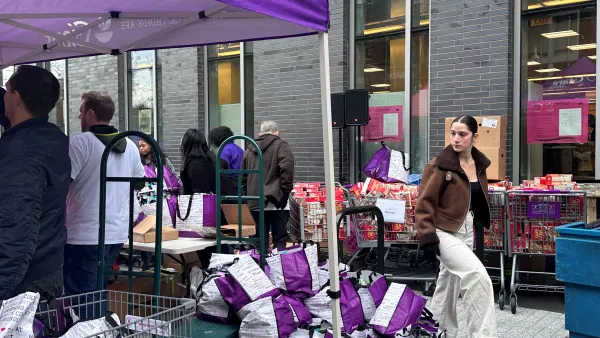Dive Brief:
- When it comes to communicating with customers about food recalls, 22 of the 26 top grocery chains are failing, according to a new report from the U.S. Public Interest Research Group (U.S. PIRG) that evaluated store policies around recalls.
- Target and Kroger along with Kroger banners Harris Teeter and Smith's received passing “C” grades based on the group’s research due to adequate public information about their recall processes. Some of the grocers noted as failing include Albertsons, Whole Foods, Food Lion, Giant Eagle, H-E-B and Wegmans.
- The group said it sent questionnaires directly to grocers and made multiple attempts to follow up with heads of food safety, but responses were minimal. In lieu of grocer input, U.S. PIRG reviewed all publicly available information on food retailers recall efforts and graded them accordingly.
Dive Insight:
The key issue the report addresses is the lack of publicly available information detailing what exactly takes place when grocers have to remove products from shelves, and how consumers are involved. U.S. PIRG said that while regulatory agencies, manufacturers and retailers play a key role in getting contaminated food out of stores, customers are usually the last to know — which could mean they don’t remove contaminated food from their homes.
The report said 84% of the grocery chains surveyed provide no public description of their recall processes or how customers are notified. More than half of those surveyed reported the presence of some type of notification process but didn’t provide further detail. Without a full description of the recall process, including how, where and when customers are notified, shoppers may not be able to fully aid in identifying and returning recalled products.
"This critical failure leaves consumers to seek out this information and risk inconsistent implementation by individual stores," the report noted.
Those stores that received a passing grade in the U.S. PIRG report have specific efforts in place that are available for the public to see. For example, Target’s website has a page specifically dedicated to product recalls, where it lists every store category and includes a line for each product recalled and the date it was recalled.
Kroger has a similar page set up, but it includes even more detail, such as affected stores, the reason for the recall and a link for more information. In a previous recall notice for spinach sent to media, Kroger said it would inform customers through register receipt messages and automated phone calls.
According to U.S. PIRG, there is a lot more most grocery stores can do to alert customers about food recalls when they occur, especially for shoppers who are enrolled in loyalty and rewards programs. Not only does warning customers protect the public and show grocers care about their shoppers, but it can help grocery stores avoid the customer backlash that can occur when people aren’t properly informed, the group said.
The Centers for Disease Control and Prevention estimates one in six Americans become sick from contaminated food or beverages each year. Customers need easy, uniform access to information about recalls and the associated policies, which grocers can provide in-store, on their websites and through direct email, phone or text communication with shoppers. The additional transparency, according to U.S. PIRG, could help reduce the rate of foodborne illnesses.
Food recalls are nothing new, but with technology as ubiquitous as it is today and more protection measures in place under the Food Safety and Modernization Act, it should be easier than ever to notify customers when there are concerns with foods they’ve purchased. Still, some grocers are worried about causing fatigue among their shoppers and over-communicating about recalls, which could create confusion, Eater reported during the height of a food recall in 2016.
In comments emailed to Grocery Dive, Hilary Thesmar, senior vice president of food safety with the Food Industry Association, said retailers openly communicate with customers during recalls, and that communication methods are driven by customer preferences.
“The greater food industry is effective at recall communications, particularly grocers at the end of the supply chain due to the number of recalls they manage with varying products and volume," she wrote.
This story has been updated with input from the Food Industry Association.










